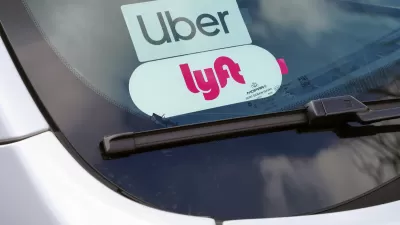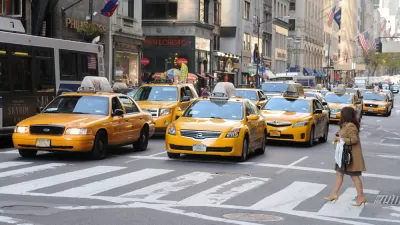A new book traces the path of the influential mobility company from its earliest days and through its many organizational and leadership ups and downs.

Mike Isaac’s new book, Super Pumped: The Battle for Uber, looks at the history of Uber and former CEO Travis Kalanick. In an interview with Andrew Small, Isaac discusses Uber’s start as a transportation company, its impact on cities and planning, and Kalanick’s ultimate fall from the corporate pinnacle.
Small asks Isaac about Uber’s use of Greyball, the program Uber used to avoid authorities in cities where it was not permitted to operate, and how city officials have responded:
A lot of cities have learned a lesson about how much to trust a startup that’s just deciding to barge in. When companies tried to roll out scooters really rapidly in San Francisco, the transportation department immediately slapped them down and threatened to fine companies that pushed through. There are a lot of sore spots from how Uber flooded the zone. City transportation officials don’t want to go through that again. They just got completely railroaded.
Uber’s vision also always went far beyond just disrupting transportation, and transit was in the crosshairs, says Isaac:
Travis wanted to compete for most, if not all, of transportation. I don’t think that he would have been satisfied with saying "We’re just going to get so many people, but then just leave existing ridership on public transportation." I think they wanted to go for it. That’s why they did those carpooling options and shuttles. That’s problematic in and of itself, because it creates a cycle in which [transit] ridership goes down, perhaps funding goes down, and some fundamental public services start to see problems.
Small’s full interview with Isaac goes into a host of other Uber issues, including the toxic corporate culture, its relationship to other companies such as Google and Lyft, and its future as it continues to lose billions of dollars.
FULL STORY: What Uber Did

Planetizen Federal Action Tracker
A weekly monitor of how Trump’s orders and actions are impacting planners and planning in America.

Maui's Vacation Rental Debate Turns Ugly
Verbal attacks, misinformation campaigns and fistfights plague a high-stakes debate to convert thousands of vacation rentals into long-term housing.

San Francisco Suspends Traffic Calming Amidst Record Deaths
Citing “a challenging fiscal landscape,” the city will cease the program on the heels of 42 traffic deaths, including 24 pedestrians.

Amtrak Rolls Out New Orleans to Alabama “Mardi Gras” Train
The new service will operate morning and evening departures between Mobile and New Orleans.

The Subversive Car-Free Guide to Trump's Great American Road Trip
Car-free ways to access Chicagoland’s best tourist attractions.

San Antonio and Austin are Fusing Into one Massive Megaregion
The region spanning the two central Texas cities is growing fast, posing challenges for local infrastructure and water supplies.
Urban Design for Planners 1: Software Tools
This six-course series explores essential urban design concepts using open source software and equips planners with the tools they need to participate fully in the urban design process.
Planning for Universal Design
Learn the tools for implementing Universal Design in planning regulations.
Heyer Gruel & Associates PA
JM Goldson LLC
Custer County Colorado
City of Camden Redevelopment Agency
City of Astoria
Transportation Research & Education Center (TREC) at Portland State University
Jefferson Parish Government
Camden Redevelopment Agency
City of Claremont





























